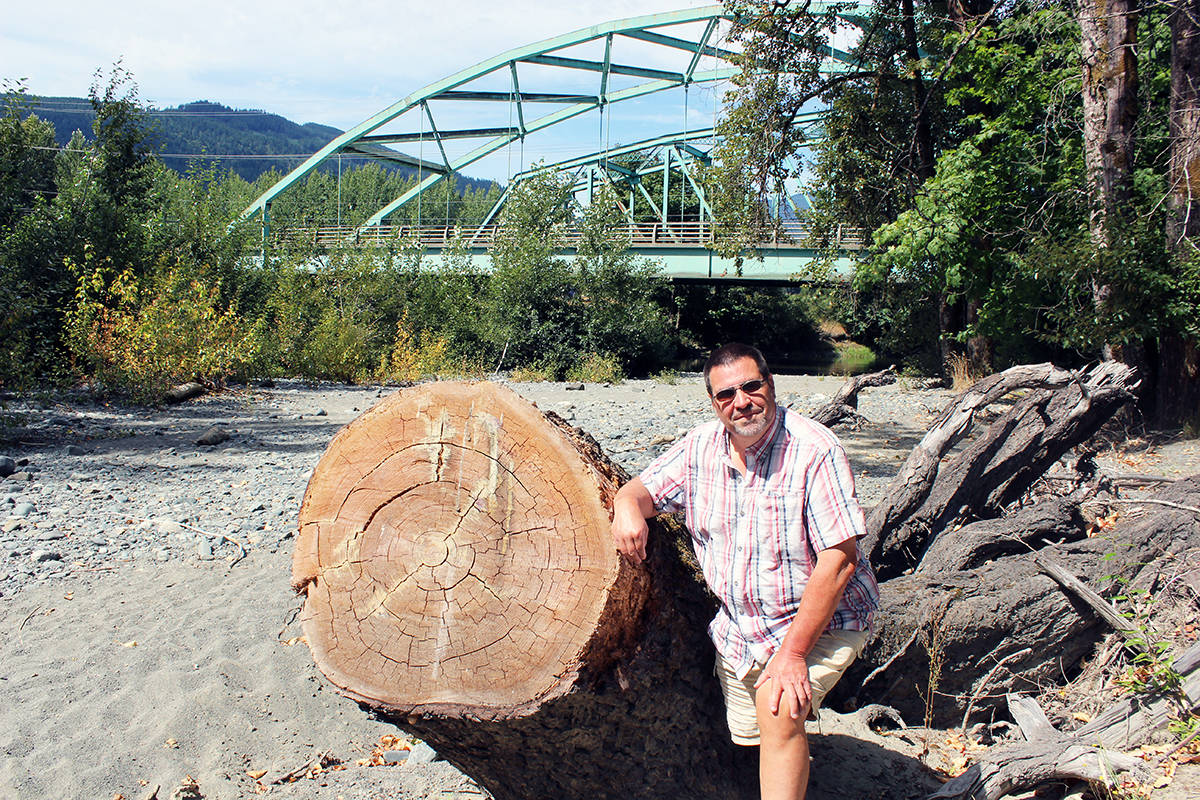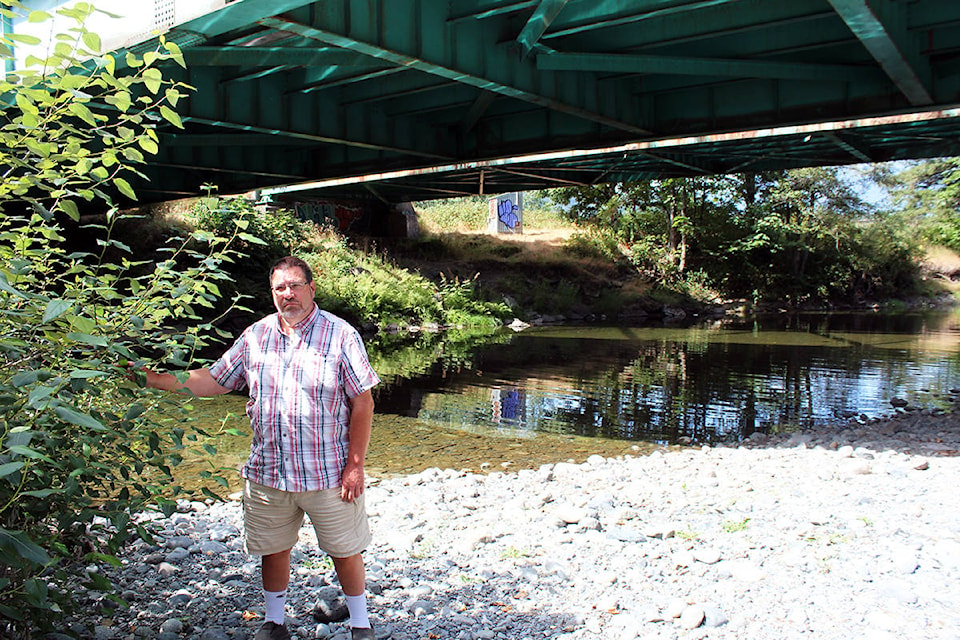Erik Piikkila walks along the Chemainus River. The dry rock and stagnant flows — symptoms of rare summer drought — are obvious.
The increasingly dire situation of the Chemainus is echoed in the neighbouring Koksilah and Cowichan Rivers — in most rivers along Vancouver Island’s eastern corridor, for that matter.
Related story: Chemainus River watershed on the list of concerns for water scarcity and drought
But while most are quick to attribute water scarcity solely to drought from climate change, Piikkila takes it a step farther.
The Ladysmith resident comes from a forestry family. He worked for the BC Forest Service as a forest technician for several years; managed and advised 10 major forest companies with 30 different operations and completed a Bachelor of Forestry in Finland. Further academic training at the University of Washington included: forest, old growth, watershed and landscape ecology along with wildfire and fire ecology.
Beyond drought, he believes river flow is dependent on five things: ecosystem-based management, thinning, fire, ecosystem restoration, and local governance of forest resources.
“We have to look after all these factors and act on them immediately,” Piikkila said. “I don’t think we can keep logging old growth anymore. We need to change how our forests are managed and we need to start thinning these forests in a coordinated and massive way across the province.”
Through forest thinning, timber supply will still be created, despite more difficult and expensive to harvest.
“We need to stop clear-cutting. We need to go to a selective logging system where we select more trees and patches of trees and logs to be retained during logging operations and left as biological legacies in the next and future forest,” said Piikkila. “We’re getting more rain in the wintertime and hotter, drier summers. There’s no old growth in the hills and we never let trees and forests get old enough.
The bottom line is forests keep water on the hillsides longer and stop water rushing down in a torrent, like when the Chemaius overflowed and flooded Russell Farm Market in January of 2019.
“Old growth Douglas-fir trees with 60 million needles slows down water, and rain and snow and allows the precipitation to drip slowly to the ground. On the ground, thick moss mats and logs on the ground act like dams, and once water reaches creeks and streams logs that have fallen in from riparian forests also dam water. All of these natural forest structures and species slow water down.”
Related story: Logjams and gravel bars the bane of Chemainus River’s existence
“Having moisture available in the ecosystem well into summer could counteract summer droughts like those we have experienced in the past decade and will experience as summer droughts intensify under climate change over the next century.”
Clearcutting by removing the forest canopies in their entirety and cutting all live and dead trees and taking away 95 per cent of the logs, changes forest hydrology in major ways, Piikkila said.
Piikkila elaborated he’s also concerned about vast areas of second growth forests that are young to middle age, between 60 and 250 years old, that no one talks about.
“If these forests were to have large old live and dead trees and large downed logs as biological legacies, they are structurally more complex and further along in old growth development. Given time, these forests which are on the cusp of oldgrowthedness, could become old growth and another important tool in fighting climate change and ensuring forests have and provide year round water supplies, allowing watersheds to fully function.
Types of restoration include: planting riparian trees and plants such as broadleaf trees like alder, maple and cottonwood which provide leaf fall into streams that are eaten by small aquatic species and then become food for salmon, and placing logs in streams to create salmon habitat, restoring wetlands or building new wetlands, especially in urban areas.
“Instead of hard infrastructure assets like storm drains and levees and pumping stations like in Duncan, bring back fire onto the landscape, bring back beavers to dam waters which provides a steady supply of water in periods of low water in late summer and early fall, and removing dams like Elwha Dam in Washington State which allows natural flows of water, natural flooding and deposition of silts and gravels creating salmon spawning habitat,” Piikkila noted.
People might wonder about the implications of restoring fire as one of the factors. New research out of California on Aug. 6 reinforced the relation between fire, water and biodiversity, Piikkila said.
“They found that letting some prescribed fires burn more freely increased soil moisture, a 30 per cent increase in summer soil moisture, drought induced tree mortality decreased and increased biodiversity (pyrodiversity). When charred by fire, logs not completely burned and wetted by winter rains become super nutrient and water sponges.”
Local governance, Piikkila added, is crucial as centralization of power and decision-making brings with it little if any ties and knowledge of local lands and ecosystems, even from people who used to work in the woods.
“Really understanding and knowing the forests has been crucial at any time but perhaps this local knowledge and experience is going to be required even more in the 21st Century,” he indicated.
“We’re going to need to learn to look after ecosystems and change in a positive way how we treat our forests in B.C. in places like Fairy Creek, the Six Mountains, Cable Bay, Peachland, Boundary Forests near Grand Forks or any forest you would care to mention in B.C., Canada or around the world.”
For more news from Vancouver Island and beyond delivered daily into your inbox, please click here.
RELATED: Drought level in Cowichan region raised to level 5




